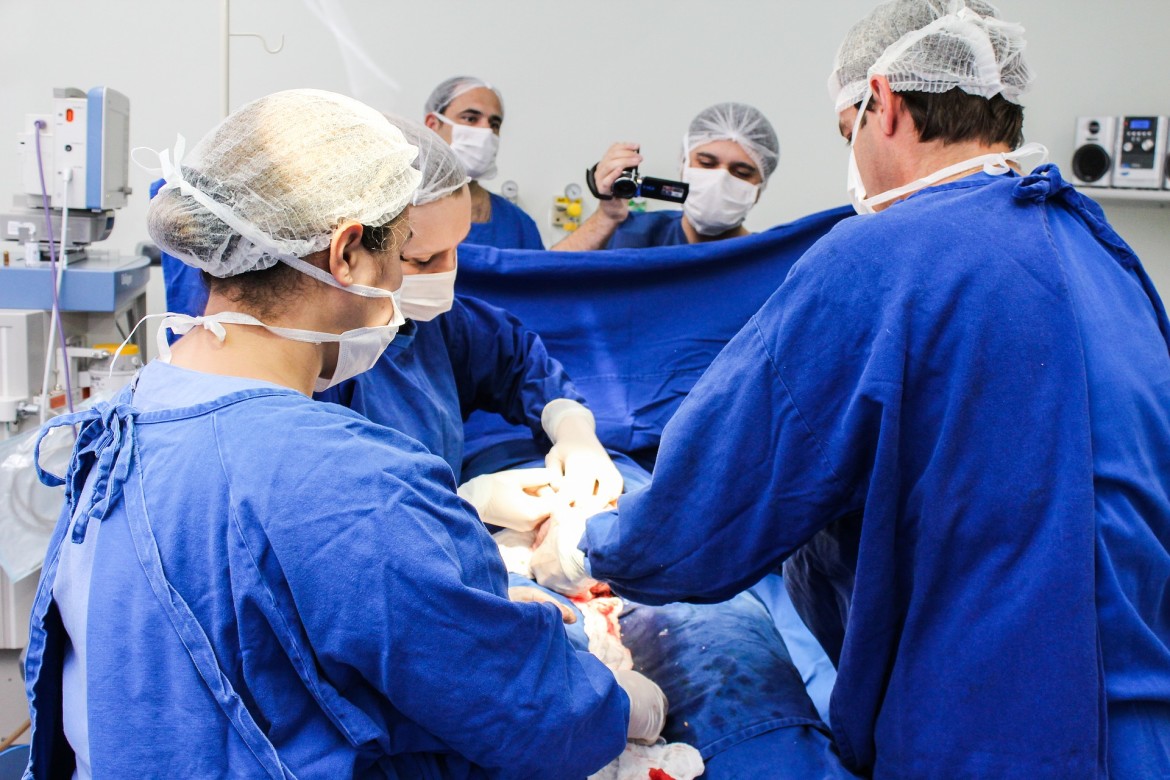The Medicalisation of Birth
22 Aug, 2019We wouldn’t have so many people on this planet if birth was supposed to be so difficult. We live in a time when we are surrounded by dramatic births in movies and women feel the need to ‘out-do’ each other with tales of their long painful labours. For women who have not yet given birth, it can seem like labour is meant to be this gruesome painful thing with caesareans, forceps, episiotomies, ventouse, epidurals, induction galore. The concept of a natural birth with no pain relief or medical intervention is something that has been relegated to the corner of hippies and third world countries. When did our understanding of birth change so drastically?
A brief history on childbirth
Until the 1700’s, childbirth was women’s business. The birth of a child was attended by female family members and close friends and the woman was nurtured and surrounded by love and encouragement. Birth took as long as it needed to and advice and tips were passed down from mother to daughter and across the community to improve the births of other women. In the 1700s, there was a shift in North America and Europe to a more technological science to childbirth, with male doctors. Women midwives attended the ‘normal births’ and the male doctors were called if there were any complications. It wasn’t until the 20th Century that childbirth moved from home to hospital. By the 1970s, home-births had fallen to 1% in the United States.
The rise in medical interventions
Medical technology has saved many women and children’s lives in childbirth where it has been necessary e.g. a caesarean for a transpose or breach baby, or forceps if the baby was stuck. But increasingly, it appears that medical interventions are used when unnecessary and without the woman’s consent - which is a whole other issue which I’ll address in another post - The Human Rights of Childbirth.
For now let’s just talk about medical intervention regardless of consent from the woman. If medical interventions are only necessary for a medical reason such as foetal distress, a transverse foetal position or some other emergency, then why do they occur so disproportionately in different countries and in private vs public hospitals.
How is it that women in traditional cultures appear to give birth with ease, without seeming to be in any great pain, but in the United States there is an expectation of pain, requests for pain relief and a higher rate of medical intervention?
Let’s explore this further looking at one particular form of medical intervention - Caesarean Sections
Study 1
In this study of births from 19 states in India in 2011, they found that there were three times as many Caesarean sections in a private hospital than in a public hospital.
“Of 22,111 live birth analyzed 49.2% were delivered at public sector, 31.9% at private sector and 18.9% were home deliveries. Prevalence of CS births were 13.7% (95% CI; 13.0- 14.3%) and 37.9% (95% CI; 36.7- 39.0%) in the public and private sectors, respectively. Higher odds of CS births were observed with- delivery at private health facility (OR 3.79; 95% C.I 3.06-4.72), urban residence (OR 1.15; 95% C.I 1.00- 1.35), first delivery after 35 years of maternal age (OR 5.5; 95% C.I 1.85- 16.4), hypertension in pregnancy (OR 1.32; 95% C.I 1.06- 1.65) and breach presentation (OR 2.37; 95% C.I. 1.63- 3.43).”
I completely understand why you’d have higher rates of Caesarean sections for a breach presentation but none of the other reasons really make sense...could it be that private hospitals are just a little bit more trigger happy with their scalpels and believe in the medicalisation of birth. Hospitals with their routines and need to measure and track every aspect of activity can reduce women's comfort in giving birth and affect the Sphincter Reflex. In a private hospital that is making money from how many patients they can churn in and out - call me a skeptic but I strongly believe that the strict timeframes in such hospitals do not give women the time they may need to labour themselves due to lack of patience.
Study 2
Similarly in this study of C section rates in 34 Subsaharan African countries, they found that there was a difference in the rate of C sections in private vs public hospitals and healthcare facilities. Again I ask, if Caesarean Sections are performed only when medically necessary, should it not be performed in an equal proportion for both public and private healthcare models?
“Results showed disparities in the percentage of C-section among women from 34 SSA countries. C-section at public healthcare settings ranged from 3% in Burkina Faso to 15.6% in Ghana. However, in private healthcare settings, C-section ranged from 0% in Sao Tome and Principe to 64.2% in Rwanda. Overall, C-section was 7.9% from public healthcare and 12.3% from private healthcare facilities respectively. In the adjusted regression model; women aged 35–49 had increase in the odds of C-section, while a unit increase in the number of children ever born had 17 and 20% significant reduction in the odds of C-section in public and private healthcare respectively. Assessing public healthcare settings; women from richer/richest households, male and large size children at birth had increase in the odds of C-section, while those from rich neighbourhood had reduction in the odds of C-section. In private healthcare settings, women with high decision making power and multiple births had increase in the odds of C-section, while those who attended ANC visits had significant reduction in the odds of C-section.”
Study 3
Similarly a cross sectional study of 70,000 births in Ireland also found variation across hospitals. Although they adjusted for case-mix, sociodemographic and organisational factors, they found that there was 11% variance for elective C-Section and 3% for Emergency C-Section because of hospital variation.
The study also mentions that this is in line with the variances we see in the UK and US with differences in C-Section rates across hospitals. “Likewise, in the UK, CS rates varied from 15% to 32% across 146 NHS Trusts in 2008, despite adjusting for various sociodemographic and clinical factors.]”
Conclusion
Although we have only looked at Caesarean Sections, you can see from these studies that there is a huge variance in rates of this intervention across hospitals. If we want to look at medical intervention more broadly, you only have to look at The Farm, a Midwifery unit in Tennessee run by Ina May Gaskin. Renouned for their excellent outcomes for mother and child, many parents flocked to the Farm to have their babies there instead of going to their hospital. They wanted a more woman centred childbirth with a focus on nurturing the mother and supporting her through the process rather than the medical technological model.
In her book Ina May’s Guide to Childbirth, Ina May writes of how medical intervention at the farm is less than 2% whilst in American hospitals it was approximately 30%. How can medical intervention needs change so drastically from practice to practice? There are a number of factors such as the rigour of a hospital routine and timeframes. Many hospitals demand that woman have their babies within 24 hours of labour commencing. With this kind of time pressure on a woman, in an unfamiliar environment, surrounded by strangers, is it any wonder that a lot of women cannot dilate their cervix in this time and often are forced into emergency C-sections or induction of labour with an episiotomy and forceps/ventouse delivery.
Ina May also discusses Doctors training. As part of their general Doctors training, Doctors are not trained in nutrition which is so important to a growing foetus. Illnesses like toxemia are treated with limiting of salt intake, water, and treatment by early induction or elective C-section. Pregnancy is not seen as a natural part of life but as an illness. Similarly, Doctors often use technology such as an ultrasound to determine the size of a woman’s pelvis and make an assessment of their pelvic size to have a natural birth for an average sized baby. Ina May suggests that Doctors may not be trained that the pelvis does not have a fixed size. It is made up of four different bones joined by ligaments that stretch at birth due to the relaxin hormones we release, so that our pelvis can move and accommodate our baby. Additionally, kneeling on all fours results in a wider pelvis than sleeping on your back during an ultrasound.
There are so many factors like those discussed above, including when a doctor was trained, that will determine their preference for using medical intervention when it may not be necessary. Although most decisions come from the best place, we only have to look at the horror stories of malpractice to let those doubts creep in.
The best thing you can do is make sure you make an informed decision on where you want to give birth, how you want to give birth, and understand the physiology of labour and your own personal preferences so that you can assert your authority to make informed choices regardless of the environment you are in or the preferences of your caregivers.
Research
https://www.ncbi.nlm.nih.gov/pmc/articles/PMC1122835/
http://broughttolife.sciencemuseum.org.uk/broughttolife/themes/birthanddeath/childbirthandmedicine
https://www.ncbi.nlm.nih.gov/pmc/articles/PMC5946478/
https://www.ncbi.nlm.nih.gov/pmc/articles/PMC6027740/
https://www.ncbi.nlm.nih.gov/pmc/articles/PMC4900579/
Ina May’s Guide to Childbirth by Ina May Gaskin
Cover Image by Cynthia Groth from Pixabay
Get The Best Of Sleepy Roo Delivered To Your Inbox
Subscribe to my newsletter and get the latest info on baby sleep! You can unsubscribe at any time.



